Visiting the New York Stock Exchange
You can't go in but the Financial District is worth a look
Sebastian Bergmann/CC BY-SA 2.0/Flickr
The New York Stock Exchange is the largest stock exchange in the world, and billions of dollars worth of stocks are traded there every day. The Financial District that surrounds it is central to the importance of New York City. But because of tightened security measures after the terrorist attacks of September 11, 2001, which occurred mere blocks away from the New York Stock Exchange (NYSE), the building is no longer open to the public for tours.

The History
New York City has been home to securities markets since 1790 when Alexander Hamilton issued bonds to deal with debt from the American Revolution. The New York Stock Exchange, which was originally called The New York Stock and Exchange Board, was first organized on March 8, 1817. In 1865, the exchange opened in its current location in Manhattan's Financial District . In 2012, the New York Stock Exchange was acquired by InterContinental Exchange.
The Building
You can view the New York Stock Exchange building from the outside at Broad and Wall streets. Its famous facade of six marble Corinthian columns below a pediment sculpture called "Integrity Protecting the Works of Man" is often draped with a huge American flag. You can get there by subway trains 2, 3, 4, or 5 to Wall Street or the R or W to Rector Street.
If you want to learn more about the financial institutions in New York, you can visit the Federal Reserve Bank of New York , which offers free tours to visit the vaults and see the gold with advance booking. It is also in the Financial District and offera insight into the inner workings of Wall Street.
The Trading Floor
Although you can no longer visit the trading floor, do not get too disappointed. It is no longer the chaotic scene that's dramatized on TV shows and movies, with traders waving slips of paper, yelling stock prices, and negotiating million-dollar deals in a matter of seconds. Back in the 1980s, there were up to 5,500 people working on the trading floor. But with the advance of technology and paperless transactions, the number of traders on the floor has dwindled to about 700 people, and it is now a much calmer, quieter environment if still loaded with daily tension.
The Ringing of the Bell
The ringing of the opening and closing bell of the market at 9:30 a.m. and 4 p.m. guarantees that no trades will take place before the opening or after the close of the market. Starting in the 1870s, before microphones and loudspeakers were invented, a large Chinese gong was used. But in 1903, when the NYSE moved to its current building, the gong was replaced by a brass bell, which is now electrically operated at the start and end of each trading day.
Sights Nearby
The Financial District is the scene of a number of different sights in addition to the NYSE. They include the Charging Bull, also called the Bull of Wall Street, which is located in Bowling Green, near the intersection of Broadway and Morris streets; Federal Hall ; City Hall Park; and the Woolworth Building. It is easy and free to see the exterior of the Woolworth Building, but if you want to take a tour, you will need advance reservations. Battery Park is also within walking distance. From there, you can take a ferry to visit the Statue of Liberty and Ellis Island .
Tours Nearby
This area is rich in history and architecture, and you can learn about it on these walking tours: History of Wall Street and 9/11, Lower Manhattan: Secrets of Downtown, and the Brooklyn Bridge. And if you're into superheroes, the Super Tour of NYC Comics Heroes and More might be just the ticket.
Food Nearby
If you need a bite to eat nearby, Financier Patisserie is a great spot for light eats, sweets, and coffee and has several Financial District locations. If you want something more substantial, Delmonico's , one of NYC's oldest restaurants, is also nearby. Fraunces Tavern , which first opened as a tavern in 1762 and was later headquarters to George Washingon and home to the Department of Foreign Affairs during the Revolutionary War, is another historic restaurant where you can sit down for a meal, as well as tour its museum.
48 Hours in Lower Manhattan: The Perfect Itinerary
5 Fascinating Historical Tours of New York City
Every NYC Neighborhood You Need to Know
The 10 Tallest Buildings in New York City
Your Guide to the Federal Reserve Bank of New York
13 Top New York City Attractions
20 Best Things to Do in Brussels
The Top 8 Things to Do in Manhattan's Financial District
5 Best Bus Tours in New York City
The 20 Best Restaurants in New York City
How to Celebrate Halloween in New York City
New York City Guide: Planning Your Trip
Diamond and Jewelry Way in New York City
New Jersey Hotels for a New York City Visit
Christmas in New York City: Best Events & Things to See
18 Best Things to Do as a Solo Traveler in NYC
This website uses cookies to improve your browsing experience and analyze the use of the website. Learn More
Reserve Your Spot with Confidence! Full Refunds with 24 Hrs Notice. Reschedule at any point, even after tour, if space allows!

New York Stock Exchange Tours

This post is a guide and a virtual tour of the New York Stock Exchange (NYSE) headquarters in Lower Manhattan, with tips on planning your visit.
Click here for a self-guided tour of Wall Street .
HOW TO GET TO THE NYSE
Located at the intersection of Wall Street and Broad Street, the New York Stock Exchange (NYSE) is by far the world's largest stock exchange and is the symbol of American capitalism.
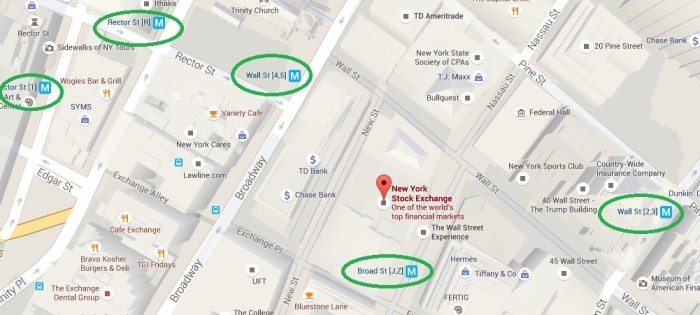
The massive facade of the building is actually not on Wall Street but on Broad.
Click here for directions to the NYSE . Or why not stay in the area?
The Financial District has a number of inexpensive hotels with great reviews on TripAdvisor .
Or, let us take you here. Many of our tours of Lower Manhattan include or start at the NYSE.
Calendar of all Lower Manhattan Tours (including our pay-what-you-wish tours)
This includes our GPS-led audio tour of Lower Manhattan, which we offer in English, Spanish, and German. Here's a sample.
As you can see on the map, the NYSE is within walking distance from several New York City subway lines.
For those new to the NYC subway, read the following 2 posts.
- How to Use the NYC Subway
- Which Subway Pass to Buy
NOTE: If you are considering any of the t ourist attraction concession passes when in NYC, then keep in mind that all include one or more hop-on-hop-off bus tours for free.
HISTORY + DESIGN
When you turn the corner to see the Broad Street side of the Exchange, you will be standing in a location of great historical significance.
Prior to 1792, businessmen who engaged in the trading of goods and money met under a tree to transact business.
It was a sycamore tree but known more commonly as a buttonwood tree.
Thus in 1792, when 24 stockbrokers signed an agreement that would regulate their dealings, they named it the Buttonwood Agreement.
25 years later, the members of the Agreement drafted an official constitution and the New York Stock & Exchange Board was born.
In 1863 its name would be shortened t o the New York Stock Exchange.
The first location of the NYSE was a room rented in a small for $200 a month in 1817 located at 40 Wall Street (now the location of the Trump Building, one of the top 10 skyscrapers in New York City .
When the original NYSE HQ’s were burned down in the Great Fire of New York (1835), the Exchange moved to a temporary headquarters and then again in 1865 moved to 10-12 Broad Street.
As the Exchange grew in business, a larger, grander building was needed.
Construction of the current NYSE building began in 1901 and George B. Post was the architect (known for his neo-classical buildings around New York including the glorious Customs House at Bowling Green).
It took two years to complete the Exchange and costs ran over the estimated price. In the end, the final cost was $4 million.
R.H. Thomas, chairman of the Building Committee justified the what-was-then substantial amount of money by saying, “Where so many of our members spend the active years of their lives, they are entitled to the best that architectural ingenuity and engineering skill can produce.”
Little could he know that a century later, the price of the building was no more than a typical trader’s end of the year bonus!
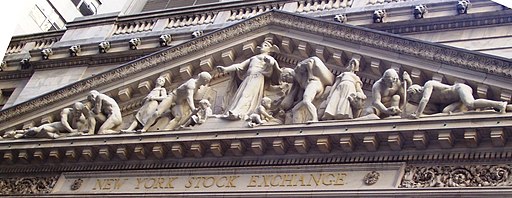
Above the columns is a pediment with a sculpture designed by John Q.A. Ward (who also designed the over-life-size standing statue of George Washington on the steps of Federal Hall diagonally across from the Exchange.
Ward’s sculpture, called “Integrity Protecting the Works of Man” centers on the wing-hatted Mercury, the god of commerce.
To her left are representations of mining and agriculture and on her right, symbols of industry, s cience, and invention, all sources of American prosperity.
THE TRADING FLOOR
Although you cannot visit the trading floor for security reasons, don’t feel too disappointed.
It is no longer the chaotic scene we’ve become familiar with throw movies and TV shows, with traders waving slips of paper, yelling stock prices, and negotiating million-dollar deals in a matter of seconds.
Back in the 1980s, there were 5,500 people working on the trading floor.
But with the advance of technology and paperless transactions, the number of traders on the ground has dwindled to a mere 700 people and is now a much calmer, quieter environment.
Click the image for the interactive 360-degree view of the main trading floor.
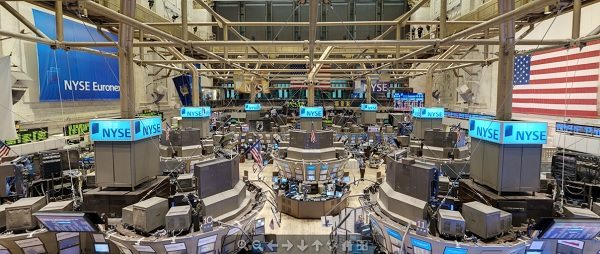
Discovery Education offers an online virtual visit to the NYSE trading floor.
If you are missing the good old days, you can see what a typical day of trading used to be like by watching movies like “Wall Street” with Michael Douglas, “ The Pursuit of Happiness” starring Will Smith, and “ Trading Places” starring Dan Aykroyd and Eddie Murphy.
THE RINGING OF THE BELL
The ringing of the bell at 9 am and again at 4 pm is more than a gesture - it guarantees the marketplace that no trades will take place before the opening or after the close of the market.
Starting in the 1870s, before microphones and loudspeakers were invented, used a large Chinese gong to let traders know to start or stop trading for the day.
But in 1903, when the Exchange moved to its current building, the gong was replaced by a brass bell which is now electrically operated.
Each of the 4 trading areas of the NYSE has its own bell which operates synchronously from one single control panel.
You can see a detailed video history of the Exchange bell here.
STUDENT GROUP VISITS
Unfortunately, the NYSE can no longer accommodate private requests for visits by school groups.
RELATED POSTS
- Finance Tours of Wall Street
- Other Top NYC Attractions
- Other Things to Do in NYC
- Things to Do in Lower Manhattan
Choose a Destination... I want them all PLUS general travel tips. Amsterdam Berlin Boston Charleston Chicago Dubai Lisbon London Los Angeles Miami Nashville New York City New Orleans Paris Philadelphia Prague Rome San Francisco Washington DC
About The Author

Stephen Pickhardt
North america, united kingdom & ireland, middle east & india, asia & oceania.

Can You Visit New York Stock Exchange: Insider Tips & Tours
If you've ever wondered about setting foot inside the iconic New York Stock Exchange (NYSE) landmark, this post is for you. Established in 1792, the NYSE stands as a symbol of financial power and history. Delve into this guide to uncover whether visiting the NYSE is on your bucket list or not.
Key Takeaways
- Visiting the New York Stock Exchange (NYSE) can be an exciting and educational experience for tourists and financial enthusiasts alike.
- Take advantage of guided tours offered by the NYSE to gain insights into the history and operations of this iconic institution.
- Exploring Wall Street, where the NYSE is located, provides a deeper understanding of the financial hub and its significance in global markets.
- Witnessing the ringing of the NYSE bell is a unique tradition that symbolizes the opening or closing of the trading day.
- Plan your visit to the NYSE by considering transportation options and nearby attractions to make the most of your trip.
- When visiting NYC and the NYSE, immerse yourself in the vibrant neighborhoods surrounding Wall Street to experience the city's diverse culture and attractions.
Understanding the NYSE
History overview.
The New York Stock Exchange (NYSE) has a profound history, tracing back to its establishment in 1792. As the largest stock exchange globally by market capitalization, it boasts a legacy of financial innovation and economic impact. Over centuries, the NYSE has been at the forefront of shaping modern finance.
Today, the NYSE remains a pivotal player in global finance and stands as an emblem of American capitalism. Its role in facilitating the trading of stocks, bonds, and various securities cannot be overstated. Moreover, numerous major corporations opt to list their stocks on this prestigious exchange due to its reputation and influence.
Significance Today
The iconic NYSE trading floor is synonymous with Wall Street's essence. Traders engage in transactions using intricate hand signals and verbal communication methods that have become symbolic over time. While technological advancements have revolutionized trading practices significantly, the physical trading floor continues to operate seamlessly.
Visiting the NYSE
Access rules.
Access to the New York Stock Exchange (NYSE) trading floor is restricted to authorized personnel. Visitors are not allowed during trading hours due to security reasons and market integrity. Strict security measures are in place at the NYSE to safeguard its operations.
Security protocols ensure that only approved individuals can access specific areas of the exchange, maintaining confidentiality and preventing unauthorized entry. These rules are essential for upholding the credibility and reliability of one of the world's largest stock exchanges.
Visitor Experience
Visitors keen on exploring the NYSE can do so through guided tours provided by the exchange. These tours offer a unique opportunity to delve into both the historical significance and day-to-day functioning of this iconic financial institution located on Wall Street.
Guided tours allow visitors a glimpse into how traders operate, providing insights into market dynamics and showcasing firsthand how transactions take place within this bustling hub of finance. By witnessing this energy and excitement, visitors gain a deeper understanding of how global markets function.
NYSE Tours and Tickets
Types of tours.
The New York Stock Exchange (NYSE) offers various ways for visitors to explore its premises. Guided tours are available, offering detailed insights into the history and operations of the exchange. On these tours, knowledgeable guides provide valuable information about how the stock market functions. Self-guided options , on the other hand, allow visitors to wander at their own pace, taking in the sights and sounds of this iconic financial institution.
When deciding between a guided or self-guided tour at the NYSE, consider your preference for structured learning versus independent exploration. For those eager to delve deep into the inner workings of one of the world's most renowned financial hubs, a guided tour might be ideal. Conversely, if you prefer flexibility in your visit and enjoy discovering things on your terms, a self-guided option could be more suitable.
Booking Process
To secure a spot for an NYSE tour, visitors have multiple booking options available. Reservations can be made online through the official website or via authorized tour operators who specialize in arranging visits to notable landmarks like the NYSE. Due to limited availability and high demand for these tours, it is advisable to book well in advance to ensure you secure a slot on your preferred date.
If you're planning a trip to New York City with hopes of touring the NYSE as part of your itinerary, remember that schedules for these tours may vary based on factors such as holidays or special events happening within or around Wall Street. Keeping an eye out for any updates regarding tour timings will help you plan accordingly so that you don't miss out on this enriching experience.
Exploring Wall Street
Landmarks nearby.
The New York Stock Exchange (NYSE) is situated in the Financial District of Manhattan, surrounded by iconic landmarks. Visitors can immerse themselves in history by visiting nearby attractions like Federal Hall, where George Washington took his oath of office; Trinity Church, a historic parish church dating back to 1697; and the famous Charging Bull statue symbolizing financial optimism. Strolling through the streets of Wall Street offers a glimpse into centuries-old architecture and the heart of American finance.
Exploring Wall Street provides an opportunity to witness firsthand the hustle and bustle of one of the world's most renowned financial districts. The area exudes an aura of power and ambition, reflecting its status as a global hub for high-stakes business dealings. The culture on Wall Street thrives on competition, innovation, calculated risks, and ultimate financial triumphs.
Wall Street Culture
Venturing into Wall Street , visitors are enveloped in a whirlwind environment synonymous with wealth creation and economic influence. The street pulsates with energy as traders rush to make deals that could shape global markets. It's a place where every decision carries weighty consequences amid intense competition for success.
- Immersive experience in the epicenter of global finance
- Opportunity to witness live trading sessions at NYSE
- Access to historical sites intertwined with America's financial legacy
Delving into Wall Street culture unveils a world driven by ambition and fueled by relentless pursuit towards prosperity. Every corner echoes stories of risk-takers who dared greatly in their quest for monetary gains amidst cutthroat rivalry.
The NYSE Bell
Historical context.
The NYSE's history is deeply connected to the development of American capitalism. It has navigated through various economic crises, such as the Great Depression and the 2008 financial crisis. Adapting to changing market conditions has been crucial for the exchange over time.
Throughout its existence, the NYSE has shown resilience in facing challenges like economic downturns. For instance, during the Great Depression, when many businesses struggled or collapsed, it continued to operate and facilitate trading activities. Similarly, during the 2008 financial crisis that shook global markets, the NYSE played a vital role in maintaining stability and confidence in the financial system.
Ceremony Importance
The opening and closing bell ceremonies at the NYSE hold significant importance in the world of finance. These ceremonies symbolize both tradition and modern-day commerce by marking the beginning and end of each trading day. Not only do they serve as practical signals for traders worldwide but also as symbolic events showcasing market activity.
Prominent figures from diverse fields are often invited to participate in these bell-ringing ceremonies at the New York Stock Exchange . This practice adds a touch of prestige to these events while highlighting their significance beyond just routine market operations. Whether it's a renowned CEO celebrating an IPO or a famous athlete commemorating an achievement, ringing the bell at NYSE remains an iconic moment associated with success and prosperity.
Getting to the NYSE
Public transport.
The NYSE is conveniently located near various public transportation options . You can easily reach it by taking the subway, with nearby stations including Wall Street (2/3/4/5), Broad Street (J/Z), and Fulton Street (A/C/J/Z). These subway lines provide direct access to the NYSE , making it a hassle-free commute for visitors. Bus routes also service the area, offering an alternative mode of transport for those exploring New York City .
When visiting the NYSE , you'll find yourself surrounded by more than just financial landmarks. Nearby attractions such as the 9/11 Memorial & Museum offer a poignant reminder of history, while Battery Park provides a serene escape from the bustling streets of Lower Manhattan. Furthermore, South Street Seaport offers visitors a chance to explore historic ships and enjoy shopping and dining experiences along its picturesque waterfront promenade.
Nearby Attractions
Visitors to the NYSE have plenty of options for entertainment and exploration in addition to witnessing one of the world's most renowned stock exchanges in action. The proximity of iconic sites like Wall Street allows tourists to immerse themselves in both financial history and modern-day trading activities within walking distance from each other. Moreover, being close to Battery Park presents an opportunity for individuals seeking relaxation amidst green spaces overlooking New York Harbor.
Touring Wall Street and the NYSE
Guided tours.
Guided tours at the New York Stock Exchange (NYSE) offer a deep dive into the heart of financial markets. Knowledgeable guides lead visitors through the iconic building, sharing insights on market operations and significant historical events. These tours provide an interactive experience where guests can ask questions and engage with finance experts directly. For those eager to learn about how stock exchanges operate and witness firsthand where financial decisions shape economies, guided tours are an ideal option.
In-depth understanding of market operations.
Interaction with finance experts.
Limited flexibility in tour schedules.
Self-Guided Options
For visitors seeking a more flexible exploration of the NYSE, self-guided options present a tailored experience. Guests can navigate through the exchange at their own pace, allowing them to focus on areas that pique their interest most. Informational materials available onsite enhance the visit by providing additional context about the history and significance of this renowned institution. With self-guided tours, individuals have the freedom to delve into specific aspects of stock trading or simply absorb the bustling atmosphere surrounding Wall Street.
- Start your visit by picking up informational materials.
- Explore different sections based on your interests.
NYC's Must-See Neighborhoods
Financial district.
The New York Stock Exchange (NYSE) is situated in the bustling Financial District, which is a hub for financial institutions like banks and investment firms. This district not only boasts the iconic NYSE but also showcases impressive architectural landmarks and modern skyscrapers. Visitors exploring this area can marvel at the historic Wall Street, where significant financial decisions are made daily.
When visiting the Financial District , tourists can witness firsthand the fast-paced environment of one of the world's most influential financial centers. The district offers a glimpse into the heart of global finance, providing insights into how markets operate and influence economies worldwide. Moreover, visitors can take guided tours to learn about the history of Wall Street and understand its impact on global trade.
Beyond Wall Street
While touring the NYSE, visitors have ample opportunity to explore other renowned attractions that make New York City truly unique. From strolling through Central Park's lush greenery to experiencing the vibrant energy of Times Square, there is no shortage of activities in "the Big Apple." Visitors can bask in Lady Liberty's grandeur by taking a ferry ride to see the Statue of Liberty up close.
In addition to these iconic landmarks, New York City offers a rich cultural scene with world-class museums like The Met and MoMA showcasing art from various eras. Food enthusiasts will delight in diverse dining options ranging from street vendors selling hot dogs to Michelin-starred restaurants offering gourmet experiences. Lastly, shopping aficionados can indulge in retail therapy along Fifth Avenue or explore unique boutiques scattered throughout different neighborhoods.
Tips for Visiting NYC
Best times to visit.
Weekdays are ideal for visiting the NYSE as this is when you can observe trading activities in full swing. Mornings are typically more bustling than afternoons, offering a livelier atmosphere. It's advisable to steer clear of holidays and market closures when planning your visit to ensure you get the most out of your experience.
When visiting New York City, it's crucial to make the most of its extensive public transportation system. The city boasts subways, buses, and taxis that provide convenient ways to move around. You can easily access maps and smartphone apps designed specifically to help visitors navigate the city efficiently.
Navigating the City
Exploring New York City offers a myriad of options through its well-connected public transport system. Subways are fast and reliable modes of travel that connect various parts of the city seamlessly. Buses offer a slower but scenic way to see different neighborhoods while getting around conveniently.
Weekdays offer an authentic trading experience at NYSE.
Morning visits provide a vibrant environment with active trading.
Public transportation in NYC is efficient and accessible.
Mornings may be crowded at NYSE compared to afternoons.
Holidays and market closures can impact your visit schedule.
Navigating New York City using public transportation allows you to immerse yourself in the local culture while experiencing diverse neighborhoods effortlessly.
You've now unlocked the secrets of visiting the New York Stock Exchange and exploring the bustling streets of Wall Street. From understanding the NYSE's significance to learning about the iconic NYSE Bell, you're well-equipped to make the most of your visit. Remember to soak in the vibrant energy of NYC's must-see neighborhoods and utilize the tips shared for a seamless experience.
Now it's time to hit the streets and immerse yourselves in the financial heartbeat of the Big Apple. So grab your tour tickets, map out your route, and get ready to dive into the world of stocks and trading at the NYSE. Your adventure awaits!
Frequently Asked Questions
Can i visit the new york stock exchange (nyse).
Yes, you can visit the NYSE! The exchange offers guided tours for visitors to explore its iconic trading floor and learn about its history. It's a great opportunity to witness the heart of Wall Street in action.
How can I book a tour of the NYSE?
To book a tour of the NYSE, you can check their official website or contact authorized tour operators. Make sure to reserve your spot in advance as tours may have limited availability due to high demand.
What will I see during a tour of the NYSE?
During your tour of the NYSE, you will get an insider's look at how one of the world's largest stock exchanges operates. You'll see traders in action, learn about market dynamics, and soak in the rich history that surrounds this financial hub.
Is visiting Wall Street included in an NYSE tour?
Yes, when you visit the NYSE, it often includes exploring Wall Street as well. This allows you to immerse yourself fully in the financial district's atmosphere and witness firsthand where significant financial decisions are made daily.
Any tips for visiting NYC and touring the NYSE?
When planning your trip to NYC and visiting the NYSE, consider factors like transportation options, security regulations at financial institutions like this one, and dress codes if applicable. Also, remember to embrace each moment while exploring this bustling metropolis!
Image Source: https://unsplash.com/
Related Posts
How far from new york to toronto: road trip & travel guide.
Curious about the distance between New York and Toronto? Wonder no more! Whether you're planning a r...
How Far is Illinois from New York: Travel Options & Tips
Did you know that the distance between Illinois and New York is approximately 790 miles? That's like...
How Much Do New York Detectives Make: Salary Insights & Career Guide
Ever wondered about the stark contrast in salaries between New York detectives and other professions...
How Much Do Paralegals Make in New York: Salary Insights

- Washington DC
- Tour Guides
New York Stock Exchange
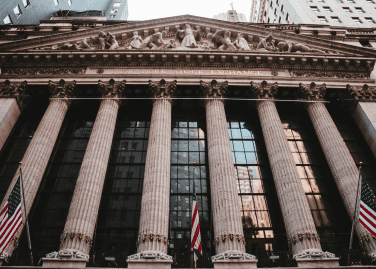
The New York Stock Exchange (NYSE) is the world’s largest stock exchange, located at 11 Wall Street in Lower Manhattan. Each day approximately $150+ Trillion US dollars worth of stocks and market funds are traded. The main building of the exchange is located at 18 Broad Street and was designated a National Historic Landmark, along with the 11th Street location in 1978.
The NYSE is run by NYSE Euronet as part of a merger of the NYSE and the electronic stock management corporation, Euronext. It is considered the “seat” of American Finance and started in 1792 when 24 New York City stockbrokers and merchants signed the Buttonwood Agreement (signed under a buttonwood tree).
The NYSE’s opening and closing bells note the start and end of trading each day at 9:30 am and 4 pm EST. After September 11, 2001, visitors are not allowed to visit the exchange but may tour the exterior and start their tour of the Financial District’s landmarks – including the Federal Reserve Bank, National Museum of the American Indian/U.S. Custom’s House, Museum of American Finance, the Fraunces Tavern Museum, and the Federal Hall National Memorial.
Unlock the ultimate New York City experience with USA Guided Tours’ exclusive private SUV and van tours . Dive into the heart of NYC’s bustling streets and iconic attractions from the unrivaled comfort of a luxury SUV or spacious van, perfect for any group size. Every tour is an adventure, led by our seasoned local guides and chauffeured by professional drivers, ensuring an unforgettable journey through the city that never sleeps. Whether you’re exploring solo, with loved ones, or in a larger group, we’ve got you covered. Book now and transform your NYC visit into a memorable expedition tailored to your needs!
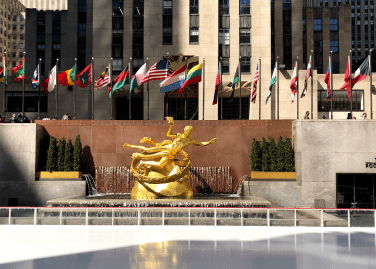
Rockefeller Center
The Rockefeller Center was built by the Rockefeller family and named after John D. Rockefeller, Jr. The center consists of 19 buildings and 22 acres of land ...
Recommended Tours
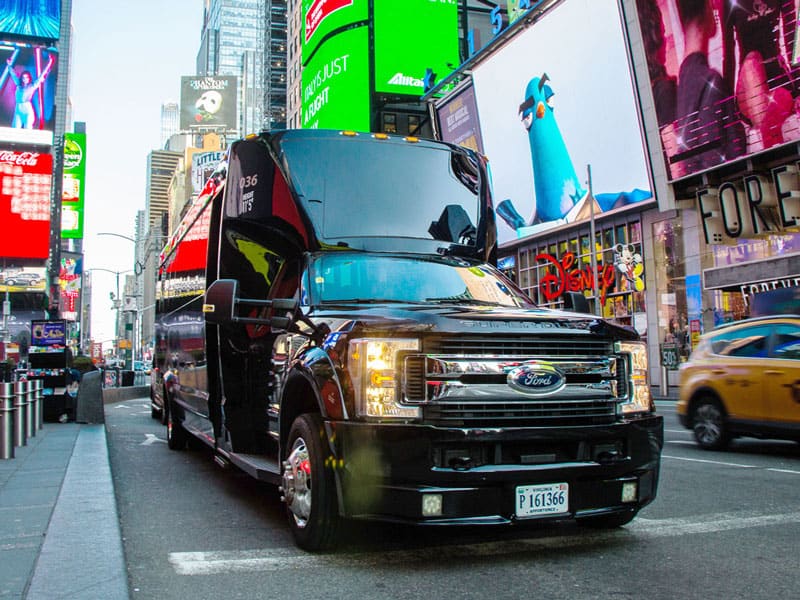
Discover NY Bus Tour
Discover NYC's Best: Award-Winning Bus Tour With Expert Guides! Luxury Transportation, Choose Closed-Top or Glass-Top Buses. Book Your City Adventure Now!
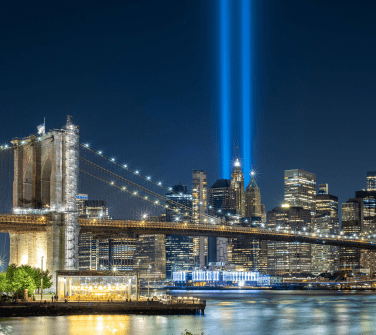
Big Apple in Lights Bus Tour
Experience NYC's Nighttime Magic: Join Our Comfortable, Fully-Guided Bus Tour For an Unforgettable Evening Exploring New York City's Amazing Sites After Dark!

NYC Private SUV Tour
Private NYC SUV Tour: Explore With Your Group, Led by Our Expert Guides and Designated Drivers. Dive into the Heart of the City in Style!
This website uses cookies to ensure you get the best experience on our website. By using our site you consent cookies.
Privacy Overview

New York City Tours
New york city sightseeing tours, new york stock exchange.
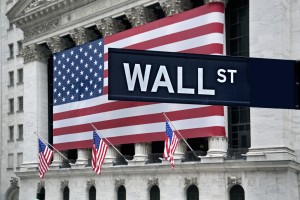
For visitors, it’s always mind-blowing to see where most of the world’s stocks, bonds and common commodities travel through, and gives a sense of reality to the fragility of currency. It’s just one of those places you always hear about, but never get the chance to see. So, while you’re visiting Manhattan, New York, make sure to stop by, and give the building some time of the day, so you can be the one to return home with a little knowledge of the largest stock exchange. To make sure you learn all about it, take the NY See It All Tour or the NYC Freedom Tour to see the New York Stock Exchange on Wall Street. The New York Stock Exchange is a popular stop on OnBoard’s sightseeing tours. Our Tour Guides walk the group off Broadway onto Wall Street and provide the tour group a historical narrative on the New York Stock Exchange, as well as the history of Wall Street and Federal Hall, where George Washington was inaugurated. This brisk walk down to Wall Street takes only 10 minutes.
The NYSE is situated on Broad Street. The Visitor Gallery has been shut down since the terrorist attack in 2001, and there is no sign of whether it will open again. However we get a wonderful perspective of the spectacular Corinthian columns on the front of the building. The Exchange was established in 1792 when 24 New York City companies and suppliers finalized the Buttonwood Contract under a buttonwood shrub. Since then, the NYSE has expanded to become the international icon it is these days.
From the NYSE, you can head back to Broadway and stroll down to the popular Wall Street Bull, one of the best picture possibilities in the area. Designed by then-unknown artist Arturo Di Modica, this icon since 1989 features a 7,000 pound version of a asking for bull with flaring nose that are touched or rubbed for best of fortune by many investors in the day. The statue was motivated by the 1987 Crash.
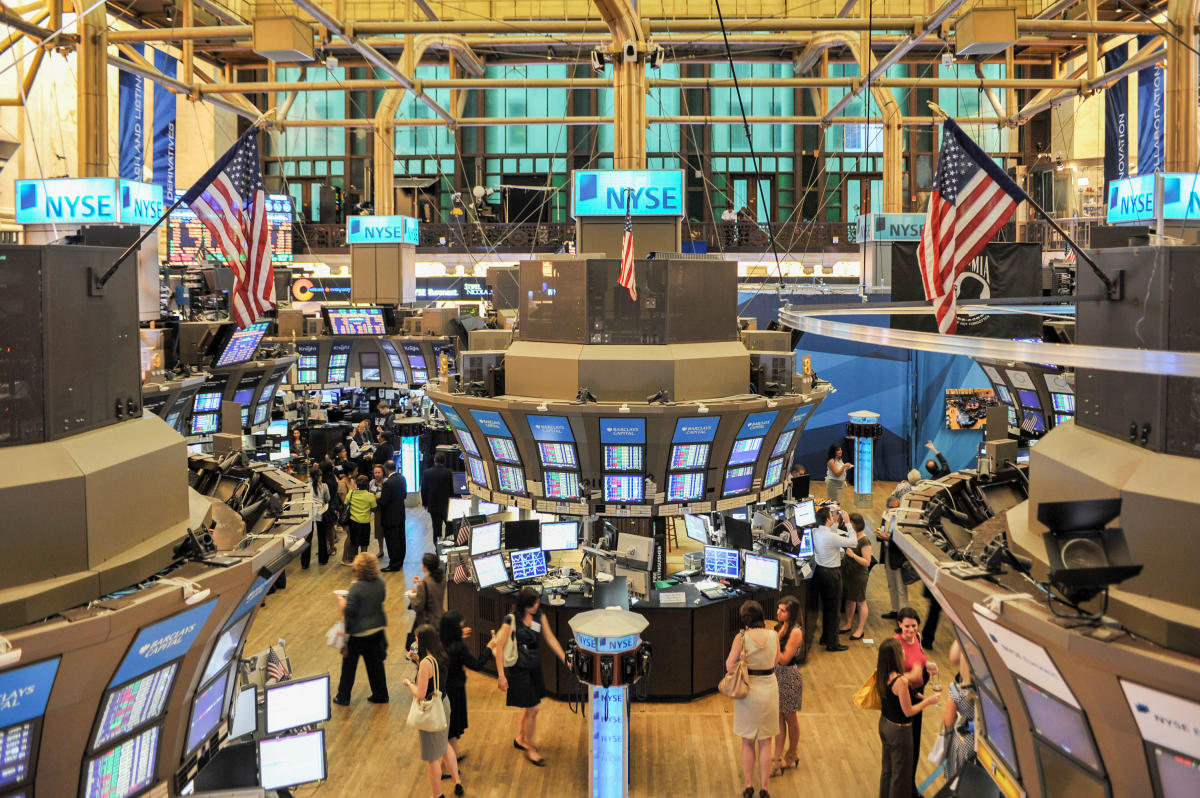
Coney Island
Brooklyn's beachside attraction holds the Cyclone roller coaster, the Wonder Wheel, the New York Aquarium, the original Nathan’s Famous and a boardwalk.

Queens Night Market
This expansive open-air night market celebrates the rich cultural diversity of NYC.

Historic Richmond Town
Watch history come alive at this living history village.
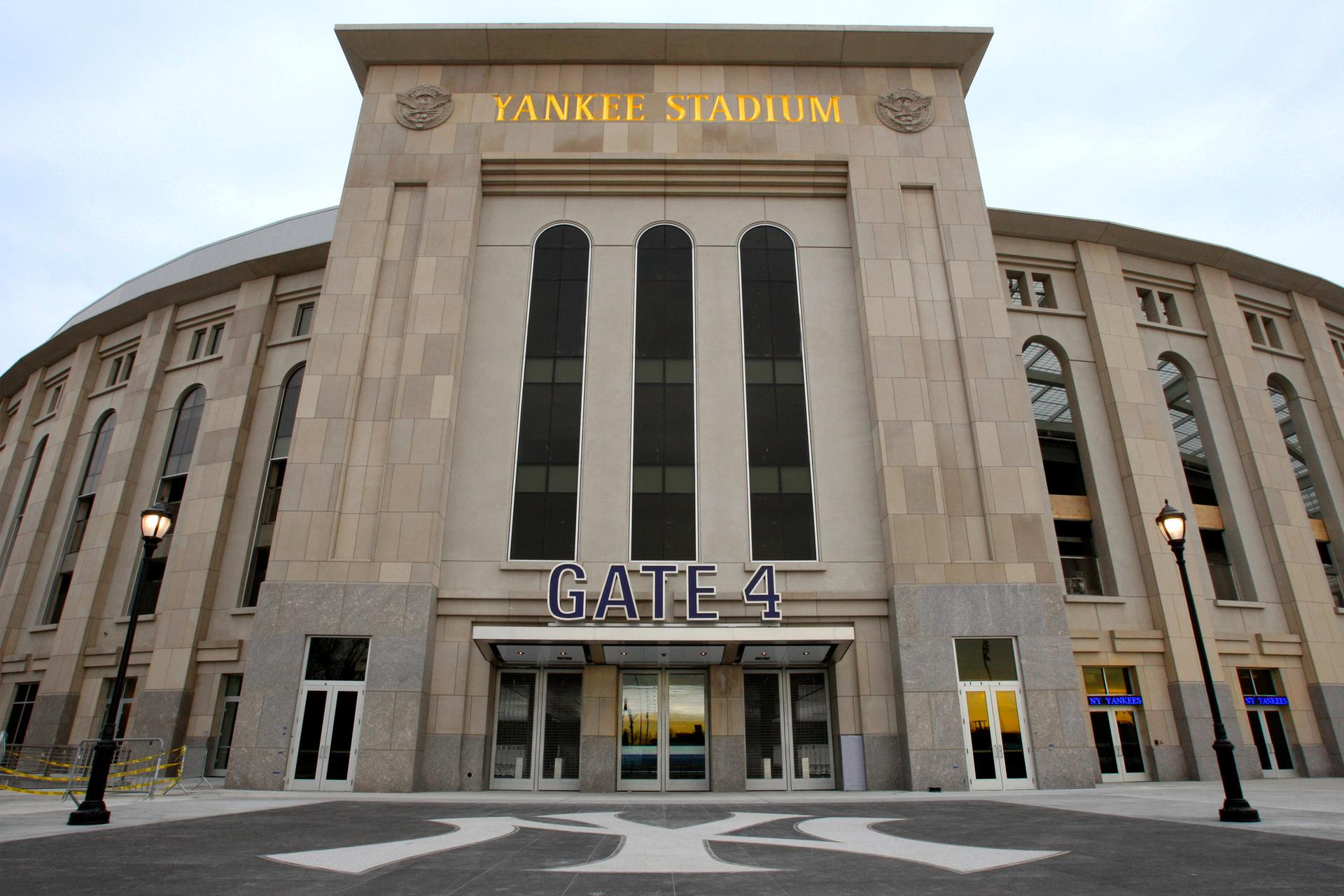
Yankee Stadium
Home to baseball's 27-time champs, the new Yankee Stadium was built in 2009 across the street from its former location.
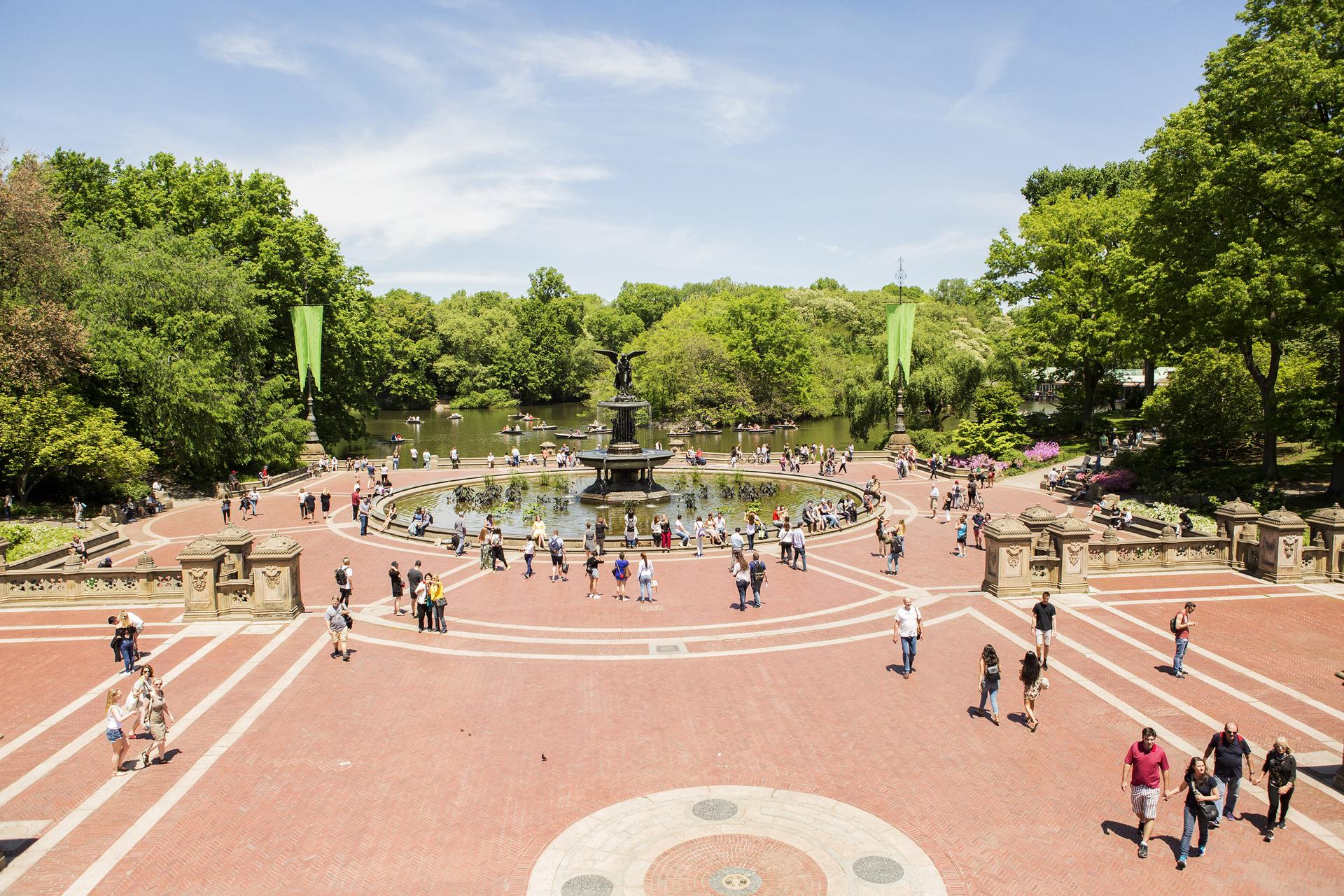
Central Park
An urban oasis in the heart of Manhattan, the 843-acre park encompasses rolling fields, woodlands, trails and waterways, plus a number of family attractions.

- Financial Crisis
- Wall Street Insider
- 9/11 Ground Zero
- Statue of Liberty and Ellis Island
Groups and Events
- Corporate Events
- Private Tours
- Meet Insiders
- In the Press
- Our Clients
Financial Crisis Tour
Wall street insider tour.
- School Groups


Explore the history of the American economy
Come with us and discover the beginnings of the Big Apple. You’ll see it all, from the place where George Washington was inaugurated to the billion-dollar institutions that influence today’s global economy. This interactive and informative tour introduces you to the real Wall Street, past and present.
$35 per child
€33 per child
£28 per child
C$48 per child
A$53 per child
Tour duration
22 Broad Street
Learn about the 400 years of history that led to modern Wall Street, including its beginnings as Dutch trading outpost.
See where high-powered meetings take place and where the fate of our economy is determined.
View the NYSE from the outside as you hear how this institution came to be a global leader on the financial stage.
Be inspired by the immigrant roots of some of the country's largest financial institutions.
Get a glimpse of where the "captains of industry" live and work and billion-dollar deals are negotiated
Discover the Financial District's cultural side, including its skyscraper and historic architecture.
More about this tour
The Wall Street Insider Tour is a less intensive version of the Financial Crisis Tour and designed for a general audience. We dig into New York’s history and share how the city became the global financial leader it is today. You’ll feel the lingering scars of New York’s first tragic terrorist attack and hear how a well-intentioned cleanup allowed the criminals to escape detection for over a century.
What makes our tours different? They’re the only tours created and guided by Wall Street insiders. Our guides have managed billion-dollar trading businesses and worked at some of the top firms in NYC’s Financial District.
This is why Oliver Stone filmed us for the Wall Street 2 movie and why leading financial and educational institutions (Bank of America, Credit Suisse, MF Global, UPenn, and Columbia, to name a few) have chosen us for their group events.
We’re excited to welcome you to Wall Street. Bring your camera and your questions! We can promise you an in-depth, interactive experience here in the Financial District.
Do I need to understand finance to enjoy this tour? You don’t need to have a financial background to enjoy our tours. Our Wall Street Insider Tour, in particular, is a great one for families since it gives an overview of Wall Street and America’s financial history. Our guides narrate without finance lingo, and questions are always encouraged.
Is this tour accessible? Yes, this tour is accessible for wheelchairs and strollers. We cover about 1 mile or 1.6 kilometers.
Does this tour go inside the NYSE? This tour doesn’t go inside the New York Stock Exchange, which has been closed to visitors since 2001. We’ll talk about this institution in detail as we view it from the outside.
Where does the tour end? This tour ends at Federal Reserve Bank on Liberty Street and Nassau Street, about 5 blocks from the meeting location.
What about the weather? Our tours run rain or shine, so please check the forecast in advance and plan accordingly. In winter, we definitely recommend bundling up and wearing extra layers. If we cancel the tour due to extreme weather conditions, we’ll offer you the chance to reschedule or receive a refund.
What is the refunds and rescheduling policy? We understand plans change. You can always change your tour 24 hours or more before you tour. We offer a 100% refund up to 24 hours prior to your tour start time. Within 24 hours of your tour, we would have incurred hard costs and therefore cannot allow rescheduling or cancellation without costs.
What is your gratuities policy? Tips are always appreciated by our guides but never expected. They should be given if you believe your guide did an outstanding job and want to show your appreciation.
Video spotlight
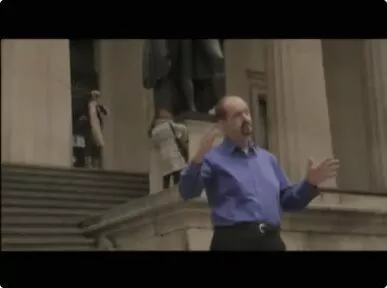
Wall Street 2 Movie
Watch a cameo of our tour in the feature film.
Getting here
Meeting point: in front of 22 broad street.
Take the subway to Wall Street. Walk 1 block over to Broad Street.
Take the subway to Fulton Street. Walk 6 blocks south to Broad Street.
Take the subway to Rector Street. Walk 3 blocks east to Broad Street and Wall Street.
Only paid parking spaces available. Not recommended due to unpredictable traffic which may cause you to miss the tour.
Other tours

This is our most in-depth, highly acclaimed tour of Wall Street. Learn how the financial crisis unraveled and how some traders made billion-dollar profits while some banks collapsed. And hear it from the people who lived it.
2 hours • $59 €55 £47 C$81 A$89
$39 per adult, €37 per adult, £31 per adult, c$54 per adult, a$59 per adult, expert guides.
With firsthand Wall Street experience
Worry-free booking
Flexible scheduling and refunds
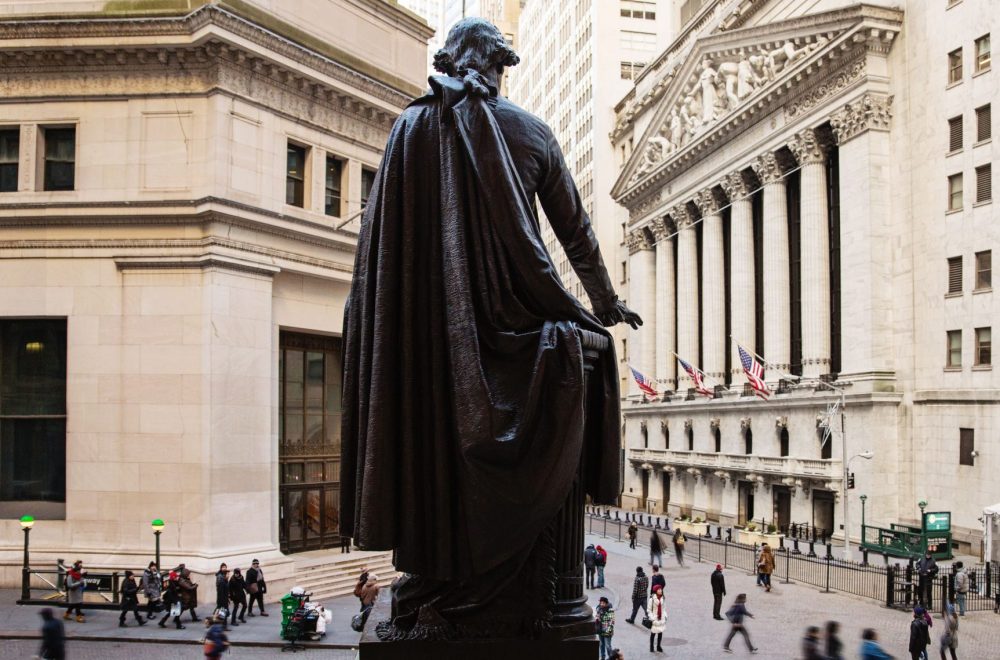
Wall Street Tour
See the financial district with someone who's worked on the inside.
- When 1:30 PM daily
- Duration 75 minutes
- Meeting Point Outside at 22 Broad Street
$39 per adult €37 per adult £31 per adult C$54 per adult A$59 per adult
$35 per child, €33 per child, £28 per child, c$48 per child, a$53 per child, local experts, worry-free booking.
Check Availability
$39 per adult
€37 per adult, £31 per adult, c$54 per adult, a$59 per adult.
- Meeting Point
- Travel Tips
- Tour the Financial District with someone who’s worked on Wall Street and can share exclusive insider stories.
- Hear true tales from inside the financial trenches that will entertain, inform, and sometimes shock you.
- Discover Lower Manhattan's rich history, architecture, and surprising secrets.
- See famous landmarks like the New York Stock Exchange, the Federal Reserve, and the Charging Bull statue.
- Learn how a Dutch trading outpost grew into the New York Stock Exchange of today.
- Be inspired by the entrepreneurial spirit of immigrants who shaped some of the biggest U.S. financial institutions.
- Feel the lingering scars of New York’s first terrorist attack and learn about its aftermath.
- Stand on the steps near where Washington was inaugurated as president.
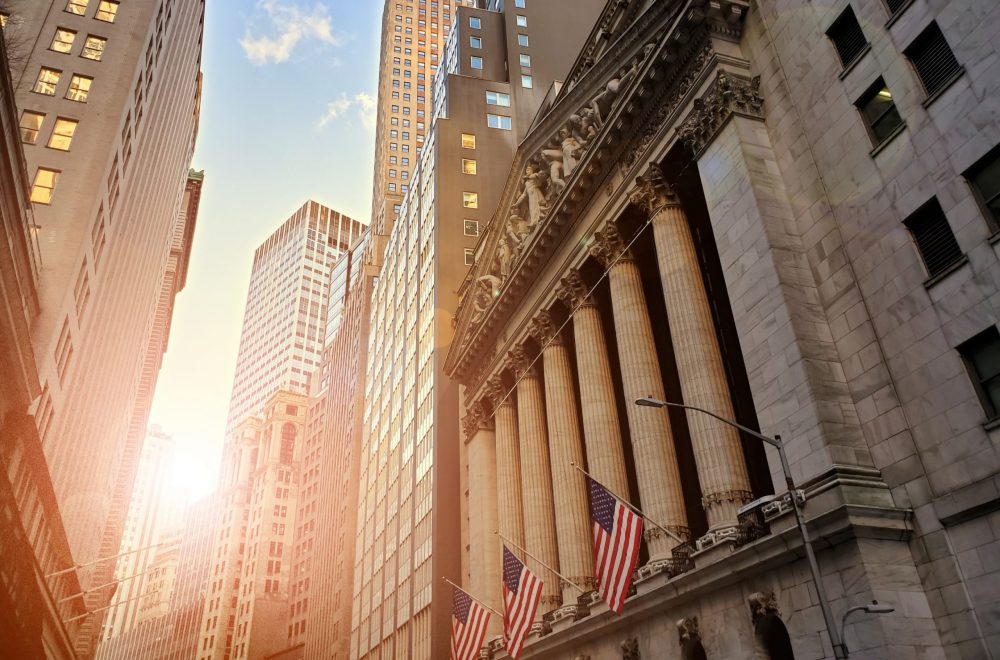
What you'll do
Come explore the beginnings of the Big Apple right here in NYC’s Financial District.
In less than two hours, we’ll cover over 400 years of history, from New York’s earliest days as a Dutch trading outpost to its rise as a global leader on the financial stage. You’ll walk the streets where billion-dollar deals get made and see the hallowed institutions where the fate of our economy hangs in the balance.
There’s history, drama, and more than a few surprises along the way. For example, you’ll learn how a cleanup started with the best of intentions let criminals escape detection for over a century. Each tour is led by a Wall Street insider who can share firsthand stories from “inside the trenches.”
Join us on this educational and entertaining walking tour, and we can promise you’ll never think of Wall Street the same way again.
Wall Street tour itinerary
New york stock exchange.
The largest stock exchange in the world
Wall Street
The eight-block stretch famous as the home of billion-dollar financial institutions
Federal Hall
Where Washington was inaugurated
Site of former investment banks and mercantile exchanges
Where giants like Goldman Sachs and Lehman Brothers once stood
Stone Street
The first paved road in the United States and now a quaint cobblestone street with memorable dining and architecture
Charging Bull
A bronze sculpture often called the Wall Street Bull, symbolizing American commerce
Trinity Church
Featuring the graveyard where Alexander Hamilton, a main architect of our financial system, is buried
Federal Reserve
The U.S. Central Bank that holds the world’s largest cache of gold in one place
Make this tour private
Book this tour for just your group, starting from $54 Book this tour for just your group, starting from €50 Book this tour for just your group, starting from £43 Book this tour for just your group, starting from C$73 Book this tour for just your group, starting from A$80
Plan your trip
Accessibility.
This tour is accessible for strollers and wheelchairs.
Tour ending point
The tour ends near our starting point at 22 Broad Street.
Refund policy
We offer a 100% refund up to 24 hours before the start time.
Wall Street tour reviews
Meeting point.
Meet your guide at 22 Broad Street, in front of the Blue Bottle Coffee. Don’t go inside any buildings as this is just our meeting point. Your guide will be out front holding a sign that says “ExperienceFirst.”
Do we go inside any buildings, such as the NYSE?
This tour is mostly an outdoor walking tour with a chance to visit inside a few buildings. The New York Stock Exchange has been closed to visitors since 2001.
How much walking is there?
We cover about 1 mile at a leisurely pace, and the walking route is fairly level.
Do we need to understand finance to enjoy this tour?
We find those who appreciate finance and current events enjoy this tour even more. However, this tour is designed with a general audience in mind, and it’s great for families as well. You don’t need to have a financial background to have fun and learn on this tour. Questions are encouraged!
What is the rescheduling policy?
We understand plans change. You can always change your tour 24 hours or more before you tour. We offer a 100% refund up to 24 hours prior to your tour start time. Within 24 hours of your tour, we would have incurred hard costs and therefore cannot allow rescheduling or cancellation without costs.
What if it rains?
Our tours run rain or shine, so please check the local forecast to plan. In rare cases when we have to cancel for extreme weather, we’ll offer you the chance to reschedule or give a full refund.
What about gratuities?
Tips are always appreciated but never expected. They’re a great way to tell your guide they did an awesome job and show your appreciation.
NYC travel guides
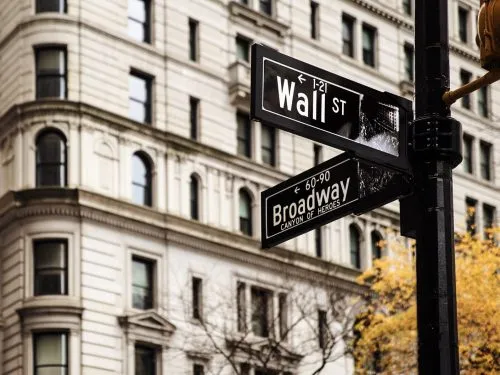
7 Must-See Spots in NYC’s Financial District (AKA Wall Street)
Wall Street is named after an actual wall. No, really. When the Dutch first colonized the island of Manhattan, they built a wall…
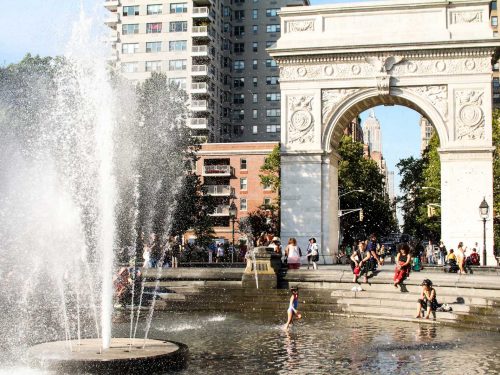
5 Essential Greenwich Village Activities Plus Where to Eat
What do Andy Warhol, the Village People, and Jack Kerouac all have in common? They all cut their teeth in Greenwich Village, one…
More tours in New York Previous Next
9/11 memorial and museum insider tour.
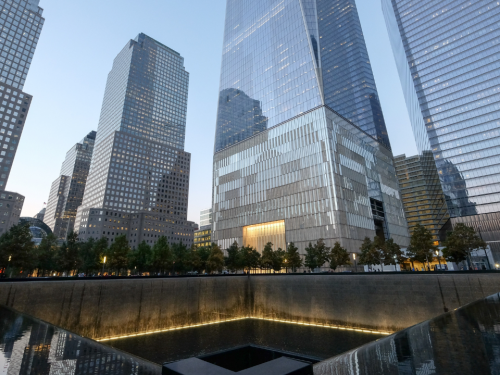
Statue of Liberty and Ellis Island Guided Tour
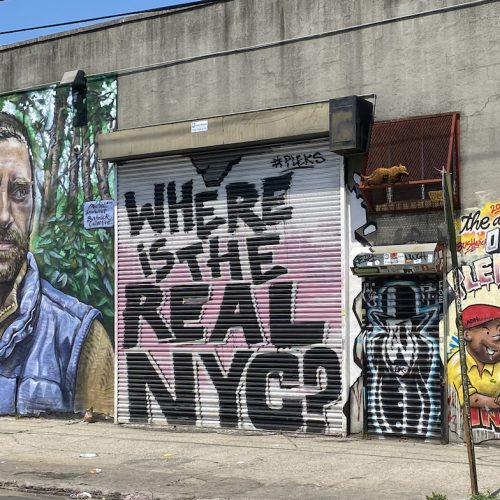
NYC Bus Tour of Brooklyn, Bronx, Queens in English

An official website of the United States government
Here’s how you know
Official websites use .gov A .gov website belongs to an official government organization in the United States.
Secure .gov websites use HTTPS A lock ( Lock A locked padlock ) or https:// means you’ve safely connected to the .gov website. Share sensitive information only on official, secure websites.

- Small Businesses
- Whistleblowers
More in About
Statutes and regulations.
Note: Except as otherwise noted, the links to the securities laws below are from Statute Compilations maintained by the Office of the Legislative Counsel, U.S. House of Representatives. These links are provided for the user's convenience and may not reflect all recent amendments. Users may also want to consult the U.S. Code by referencing the Popular Name Table . For questions concerning the meaning or application of a particular law, please consult with an attorney who specializes in securities law.
Securities Act of 1933
Securities exchange act of 1934, trust indenture act of 1939, investment company act of 1940, investment advisers act of 1940, sarbanes-oxley act of 2002, dodd-frank wall street reform and consumer protection act of 2010, jumpstart our business startups act of 2012.
- Rules and Regulations
Often referred to as the "truth in securities" law, the Securities Act of 1933 has two basic objectives:
require that investors receive financial and other significant information concerning securities being offered for public sale; and
prohibit deceit, misrepresentations, and other fraud in the sale of securities.
See the full text of the Securities Act of 1933 .
Purpose of Registration
A primary means of accomplishing these goals is the disclosure of important financial information through the registration of securities. This information enables investors, not the government, to make informed judgments about whether to purchase a company's securities. While the SEC requires that the information provided be accurate, it does not guarantee it. Investors who purchase securities and suffer losses have important recovery rights if they can prove that there was incomplete or inaccurate disclosure of important information.
The Registration Process
In general, securities sold in the U.S. must be registered. The registration forms companies file provide essential facts while minimizing the burden and expense of complying with the law. In general, registration forms call for:
a description of the company's properties and business;
a description of the security to be offered for sale;
information about the management of the company; and
financial statements certified by independent accountants.
Registration statements and prospectuses become public shortly after filing with the SEC. If filed by U.S. domestic companies, the statements are available on the EDGAR database accessible at www.sec.gov. Registration statements are subject to examination for compliance with disclosure requirements.
Not all offerings of securities must be registered with the Commission. Some exemptions from the registration requirement include:
private offerings to a limited number of persons or institutions;
offerings of limited size;
intrastate offerings; and
securities of municipal, state, and federal governments.
By exempting many small offerings from the registration process, the SEC seeks to foster capital formation by lowering the cost of offering securities to the public.
With this Act, Congress created the Securities and Exchange Commission. The Act empowers the SEC with broad authority over all aspects of the securities industry. This includes the power to register, regulate, and oversee brokerage firms, transfer agents, and clearing agencies as well as the nation's securities self regulatory organizations (SROs). The various securities exchanges, such as the New York Stock Exchange, the NASDAQ Stock Market, and the Chicago Board of Options are SROs. The Financial Industry Regulatory Authority (FINRA) is also an SRO.
The Act also identifies and prohibits certain types of conduct in the markets and provides the Commission with disciplinary powers over regulated entities and persons associated with them.
The Act also empowers the SEC to require periodic reporting of information by companies with publicly traded securities.
See the full text of the Securities Exchange Act of 1934 .
Corporate Reporting
Companies with more than $10 million in assets whose securities are held by more than 500 owners must file annual and other periodic reports. These reports are available to the public through the SEC's EDGAR database.
Proxy Solicitations
The Securities Exchange Act also governs the disclosure in materials used to solicit shareholders' votes in annual or special meetings held for the election of directors and the approval of other corporate action. This information, contained in proxy materials, must be filed with the Commission in advance of any solicitation to ensure compliance with the disclosure rules. Solicitations, whether by management or shareholder groups, must disclose all important facts concerning the issues on which holders are asked to vote.
Tender Offers
The Securities Exchange Act requires disclosure of important information by anyone seeking to acquire more than 5 percent of a company's securities by direct purchase or tender offer. Such an offer often is extended in an effort to gain control of the company. As with the proxy rules, this allows shareholders to make informed decisions on these critical corporate events.
Insider Trading
The securities laws broadly prohibit fraudulent activities of any kind in connection with the offer, purchase, or sale of securities. These provisions are the basis for many types of disciplinary actions, including actions against fraudulent insider trading. Insider trading is illegal when a person trades a security while in possession of material nonpublic information in violation of a duty to withhold the information or refrain from trading.
Registration of Exchanges, Associations, and Others
The Act requires a variety of market participants to register with the Commission, including exchanges, brokers and dealers, transfer agents, and clearing agencies. Registration for these organizations involves filing disclosure documents that are updated on a regular basis.
The exchanges and the Financial Industry Regulatory Authority (FINRA) are identified as self-regulatory organizations (SRO). SROs must create rules that allow for disciplining members for improper conduct and for establishing measures to ensure market integrity and investor protection. SRO proposed rules are subject to SEC review and published to solicit public comment. While many SRO proposed rules are effective upon filing, some are subject to SEC approval before they can go into effect.
This Act applies to debt securities such as bonds, debentures, and notes that are offered for public sale. Even though such securities may be registered under the Securities Act, they may not be offered for sale to the public unless a formal agreement between the issuer of bonds and the bondholder, known as the trust indenture, conforms to the standards of this Act.
See the full text of the Trust Indenture Act of 1939 .
This Act regulates the organization of companies, including mutual funds, that engage primarily in investing, reinvesting, and trading in securities, and whose own securities are offered to the investing public. The regulation is designed to minimize conflicts of interest that arise in these complex operations. The Act requires these companies to disclose their financial condition and investment policies to investors when stock is initially sold and, subsequently, on a regular basis. The focus of this Act is on disclosure to the investing public of information about the fund and its investment objectives, as well as on investment company structure and operations. It is important to remember that the Act does not permit the SEC to directly supervise the investment decisions or activities of these companies or judge the merits of their investments.
See the full text of the Investment Company Act of 1940 .
This law regulates investment advisers. With certain exceptions, this Act requires that firms or sole practitioners compensated for advising others about securities investments must register with the SEC and conform to regulations designed to protect investors. Since the Act was amended in 1996 and 2010, generally only advisers who have at least $100 million of assets under management or advise a registered investment company must register with the Commission.
See the full text of the Investment Advisers Act of 1940 .
On July 30, 2002, President Bush signed into law the Sarbanes-Oxley Act of 2002, which he characterized as "the most far reaching reforms of American business practices since the time of Franklin Delano Roosevelt." The Act mandated a number of reforms to enhance corporate responsibility, enhance financial disclosures and combat corporate and accounting fraud, and created the "Public Company Accounting Oversight Board," also known as the PCAOB, to oversee the activities of the auditing profession. (Please check the Classification Tables maintained by the U.S. House of Representatives Office of the Law Revision Counsel for updates to any of the laws.) Find links to all Commission rulemaking and reports issued under the Sarbanes-Oxley Act .
See the full text of the Sarbanes-Oxley Act of 2002 .
The Dodd-Frank Wall Street Reform and Consumer Protection Act was signed into law on July 21, 2010 by President Barack Obama. The legislation set out to reshape the U.S. regulatory system in a number of areas including but not limited to consumer protection, trading restrictions, credit ratings, regulation of financial products, corporate governance and disclosure, and transparency. (Please check the Classification Tables maintained by the U.S. House of Representatives Office of the Law Revision Counsel for updates to any of the laws.) Find links to all Commission rulemaking and reports issued under the Dodd-Frank Act .
See the full text of the Dodd-Frank Wall Street Reform and Consumer Protection Act of 2010 .
The Jumpstart Our Business Startups Act (the "JOBS Act") was enacted on April 5, 2012. The JOBS Act aims to help businesses raise funds in public capital markets by minimizing regulatory requirements. The full text of the Act is available at: http://www.gpo.gov/fdsys/pkg/BILLS-112hr3606enr/pdf/BILLS-112hr3606enr.pdf . (Please check the Classification Tables maintained by the U.S. House of Representatives Office of the Law Revision Counsel for updates to any of the laws.)
- Researching the Federal Securities Laws Through the SEC Website .
Last Reviewed or Updated: Oct. 1, 2013
Money Report

5 things to know before the stock market opens
By sean conlon,cnbc • published july 2, 2024 • updated on july 2, 2024 at 7:00 am.
- The Nasdaq closes at a fresh record to kick off the second half.
- Paramount Global is looking for a streaming partner.
- The Boston Celtics is planning to be sold.
Here are five key things investors need to know to start the trading day:
1. Starting off strong
24/7 New York news stream: Watch NBC 4 free wherever you are
All three major indexes kicked off the second half on a positive note, posting gains for Monday's trading session. The tech-heavy Nasdaq Composite closed the session at a fresh record, gaining 0.83% to end at a high of 17,879.30. The S&P 500 and the Dow Jones Industrial Average also closed higher, with the broad market index gaining 0.27% and the Dow gaining 0.13%. The tech sector also finished with gains to start the second half, moving 1.3% higher. Tech stocks Microsoft , Apple and artificial intelligence darling Nvidia advanced 2.2%, 2.9% and 0.6%, respectively. Follow live market updates .
2. New deal?
Paramount Global is making moves on merger talks. According to people familiar with the matter, the company's leadership is actively meeting with executives at other media and tech companies to explore merging Paramount+ with another streaming entity and having the platform become co-owned. People familiar with the matter also said that Warner Bros. Discovery has expressed interest in a deal being reached, as a Max and Paramount+ combo could increase their competitiveness with the array of platforms from Disney – namely, Disney+, Hulu and ESPN – other platforms like Netflix . This comes after Warner Bros. Discovery previously held preliminary merger talks earlier this year. A streaming deal, if reached, could lead to other streaming partnerships across the media industry.
Get Tri-state area news and weather forecasts to your inbox. Sign up for NBC New York newsletters.
3. Boston Sale-tics

The Boston Celtics may soon get sold. The team's ownership group has announced that it plans to sell it , with the controlling family of the group saying it intends to sell all of its shares in the team "for estate and family planning consideration." The sale of a majority stake is expected to be completed by the end of this year or early next year, and the remainder of the sale would close in 2028, according to a statement . The sale combined with the cost of sports media rights could lead to a valuation close to a record $4 billion or more, which is the amount the NBA's Phoenix Suns reached in 2023.
4. Uncompensated

It looks like top executives at Salesforce may not get a compensation plan. Investors have voted against the plan after shareholder advisory groups expressed concerns about equity awards that CEO Marc Benioff had been granted. A regulatory filing on Monday showed that 339.3 million votes were made in favor of approving the plan, while 404.8 million votes were made against. This is despite the fact that the board had urged shareholders to support the resolution. However, two shareholder advisory firms – Glass Lewis and Institutional Shareholder Services – had advocated for striking down the resolution. Earlier this year, the board's compensation committee gave Benioff a second long-term equity award worth $20 million for the company's strong performance, among others.
5. Immunity

The Supreme Court has sided with Donald Trump. In a 6-3 ruling, the court decided on Monday that the former president has "presumptive immunity" for official acts he performed as president. This throws a wrench into the election interference case brought forth by special counsel Jack Smith. Though, the former president is not immune for "unofficial acts," the court ruled, with the majority further specifying that "not everything the President does is official." As a result, the case will be sent back to U.S. District Judge Tanya Chutkan. Now, the chances that the criminal case against Trump will head to trial before the Nov. 5 election have been squashed.
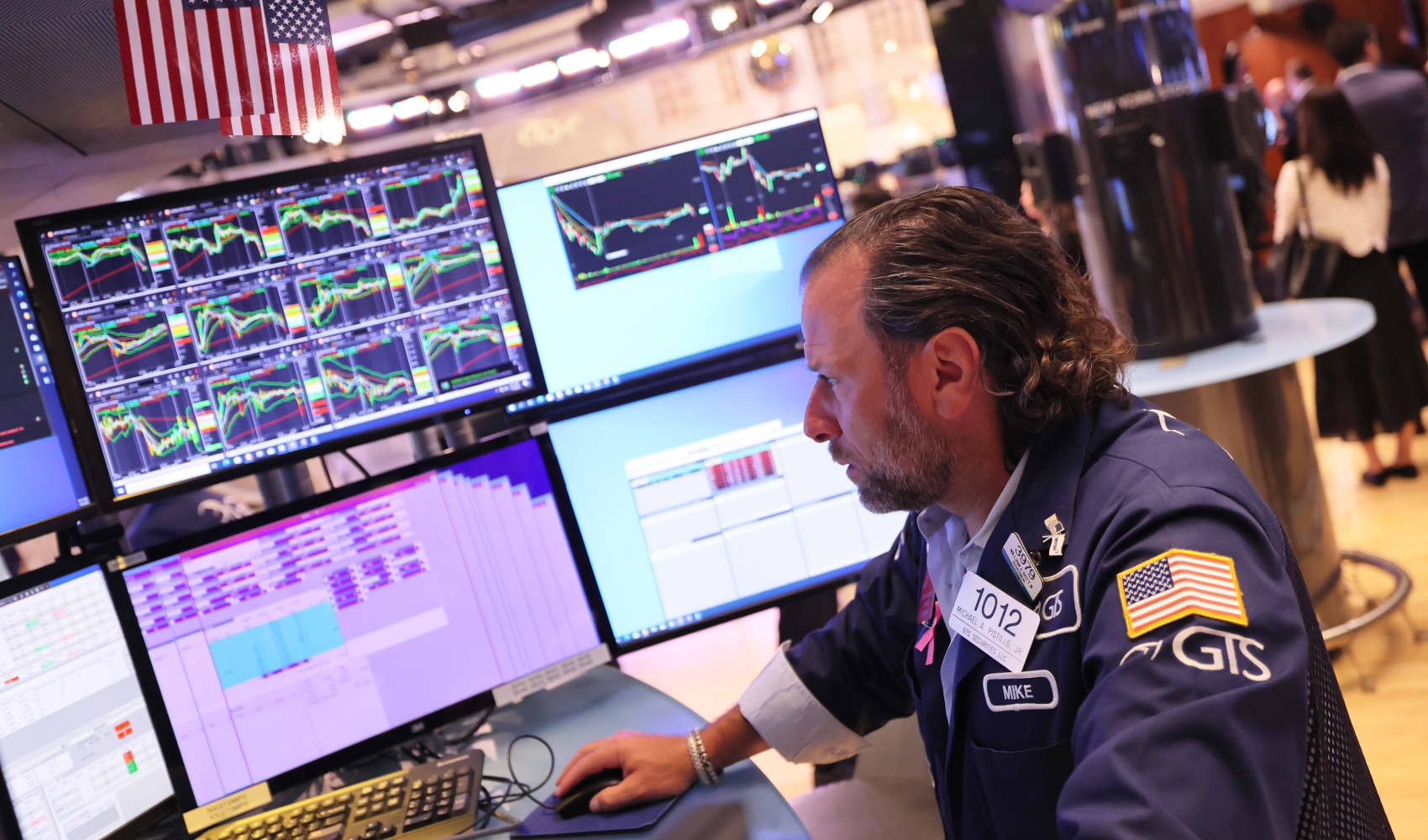
CNBC Daily Open: Tesla soars, S&P closes above 5,500

Six NYC hotels are providing free helicopter airport transfers into the city — with one small catch
— CNBC's Brian Evans, Samantha Subin, Alex Sherman, Lillian Rizzo, Jordan Novet and Kevin Breuninger contributed to this report.
— Follow broader market action like a pro on CNBC Pro .
Also on CNBC
- 5 things to know before the stock market opens Monday
- 5 things to know before the stock market opens Friday
- 5 things to know before the stock market opens Thursday

This article tagged under:

IMAGES
VIDEO
COMMENTS
5-Star Rated New York Stock Exchange Tickets & Activities ! Book on Viator. Quick & Easy Purchase Process. Full Refund Available up to 24 Hours Before Your Tour Date
The New York Stock Exchange — also known as the "Big Board" — is one of the oldest and largest stock exchanges on the planet. Located on Wall Street in Lower Manhattan, the NYSE stands as both a symbol of capitalism and as the financial center of the U.S. Easily the most important landmark on Wall Street, the stock exchange practically ...
See the highlights in just hours with this private walking tour that takes you through the area's history-making moments from Dutch colonial settlers to the birth of the New York Stock Exchange. Walk in the shadow of the modern skyscrapers and end at the 9/11 Memorial. 2 hours 30 minutes. Free Cancellation.
New York Stock Exchange. 603 reviews. #165 of 2,174 things to do in New York City. Points of Interest & LandmarksArchitectural Buildings. Closed now. 9:30 AM - 4:00 PM. Write a review. About. The NYSE is a frantic, frenetic assemblage of traders, technology and tension.
The Building. You can view the New York Stock Exchange building from the outside at Broad and Wall streets. Its famous facade of six marble Corinthian columns below a pediment sculpture called "Integrity Protecting the Works of Man" is often draped with a huge American flag. You can get there by subway trains 2, 3, 4, or 5 to Wall Street or the ...
In 1863 its name would be shortened to the New York Stock Exchange. The first location of the NYSE was a room rented in a small for $200 a month in 1817 located at 40 Wall Street (now the location of the Trump Building, one of the top 10 skyscrapers in New York City. When the original NYSE HQ's were burned down in the Great Fire of New York ...
Visitor Experience. Visitors keen on exploring the NYSE can do so through guided tours provided by the exchange. These tours offer a unique opportunity to delve into both the historical significance and day-to-day functioning of this iconic financial institution located on Wall Street.. Guided tours allow visitors a glimpse into how traders operate, providing insights into market dynamics and ...
The New York Stock Exchange (NYSE) is the world's largest stock exchange, located at 11 Wall Street in Lower Manhattan. Each day approximately $150+ Trillion US dollars worth of stocks and market funds are traded. The main building of the exchange is located at 18 Broad Street and was designated a National Historic Landmark, along with the 11th Street location in 1978.
The New York Stock exchange, or "The Big Board" as traders know it, is one of the most important financial institutions located in Manhattan, New York. It's the world's largest stock exchange, and the average trading value, per day, is an estimated 153 billion dollars. Another landmark that's a must-see when visiting Manhattan, The ...
On Wednesday, June 7, The New York Stock Exchange welcomed Fiserv, Inc. ( NYSE: FI) to celebrate its listing, making a big orange splash on the corner of Wall & Broad! This listing marked the second largest transfer at NYSE ($71B) — the largest since 2013. 11 Wall Street is one of the most exclusive and sought-after event spaces in New York City.
The stock exchange is a living piece of American history and the world's largest of its kind, where billions of dollars of stocks are traded daily. ... New York Stock Exchange . place. 11 Wall St., Manhattan, NY, 10005. View Website call_made. ... Top Places to Visit in NYC Right Now. Attractions & Tours. Coney Island.
The NY Stock Exchange is a nice building within close reach of many NY sights, but a little disappointing. The main disappointment is that you are no longer allowed to tour the New York Stock Exchange due to security fears after 9/11. This is fair enough - but it's one of the main reasons people used to visit Wall St as a tourist.
The New York Stock Exchange is located in the Financial District at 11 Wall Street. One convenient way to arrive is by citywide sightseeing tour—most tours visit the exchange, along with New York's top sights, so you see more in less time. Alternatively, take the subway. Ride the 2, 3, 4, or 5 to Wall Street, or take the N, R, or W to Rector ...
Wall Street Insider Tour. On this unique 75-minute guided tour of Wall Street you'll see world-famous financial landmarks such as the New York Stock Exchange, Federal Reserve, and Wall Street. While walking along the streets of Lower Manhattan, your guide will tell you stories that only an insider would know about.
1. The New York Stock Exchange. The New York Stock Exchange is one of New York's most influential buildings. Sitting right at the corner of Broad and Wall Street, this historical site is even more impressive when you see it in person. When you think of classic things to do on Wall Street, this place is one of the first to come to mind.
2 hours • $59. Learn More. With firsthand Wall Street experience. Flexible scheduling and refunds. Learn about the 400 years of history that lead to modern Wall Street from the Dutch trading outpost to the humble beginnings of the NYSE to the current financial markets with an English-speaking guide. See where high-powered meetings take place ...
The New York Stock Exchange building in the Financial District is one of the most iconic buildings in NYC. Located at 11 Wall Street, the historical site has...
Mega-cap tech stocks are outperforming with the NYSE FANG+ index up ~2% but with some of the underperformers within that cohort the primary drivers of strength. Other cyclical sectors are under pressure. As we head to print the S&P 500 is up ~0.15% while the equal-weight version of the index is down 0.8% while the Russell is down a similar amount.
See famous landmarks like the New York Stock Exchange, the Federal Reserve, and the Charging Bull statue. Learn how a Dutch trading outpost grew into the New York Stock Exchange of today. Be inspired by the entrepreneurial spirit of immigrants who shaped some of the biggest U.S. financial institutions.
World's largest capital market. Jan 2023 • Couples. The New York Stock Exchange is colloquially known as the Big Board. It is housed in an impressive Beaux Arts building in Wall Street.. Wall Street, a name synonymous with the NYSE. Wall Street is a mall, narrow thoroughfare, dominated by the NYSE. The NYSE provides a marketplace to trade stocks.
Strolling down Wall Street, see The New York Stock Exchange and Federal Hall, the United States' first capitol. Nearby, visit a building concealing $400 billion of gold beneath its foundations. Passing through the city's first paved street, explore the footprints of a 17th-century tavern and the remnants of the old City Hall of New Amsterdam.
According to "The Unofficial Guide to New York" : "To tour the NYSE, get in line at 9 am for a free but limited ticket, pick up a brochure at the main desk (20 Broad Street @ Wall Street), and then head directly to the glass-walleded observation deck, where you can look down on the frantic hand signals and such.The rest of the "exhibits" are a quick walk."
Wall Street's eight blocks are full of stories of the past and present, but other similar walking tours don't offer an exclusive look into the area's history with someone who worked on Wall Street. This tour is led by Wall Street insiders, and takes you to see top attractions such as the New York Stock Exchange and Goldman Sachs. Plus, you'll get the scoop about the lifestyle of a Wall ...
This includes the power to register, regulate, and oversee brokerage firms, transfer agents, and clearing agencies as well as the nation's securities self regulatory organizations (SROs). The various securities exchanges, such as the New York Stock Exchange, the NASDAQ Stock Market, and the Chicago Board of Options are SROs.
Wall Street Insider Tour. On this unique 75-minute guided tour of Wall Street you'll see world-famous financial landmarks such as the New York Stock Exchange, Federal Reserve, and Wall Street. While walking along the streets of Lower Manhattan, your guide will tell you stories that only an insider would know about.
All three major indexes kicked off the second half on a positive note, posting gains for Monday's trading session. The tech-heavy Nasdaq Composite closed the session at a fresh record, gaining 0. ...